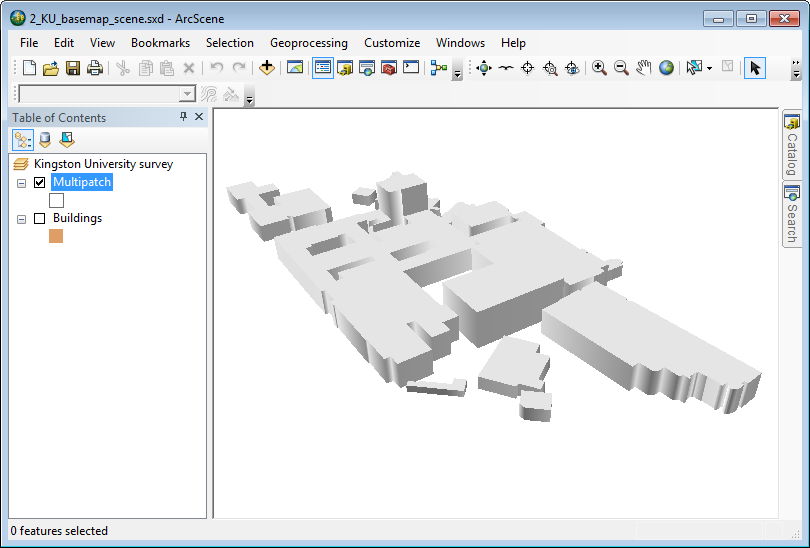
SELECT c.name FROM cola_markets c WHERE SDO_WITHIN_DISTANCE(c.shape, SDO_WITHIN_DISTANCE operator (two examples) 'sdo_num_res=2', 1) = 'TRUE' ORDER BY dist WHERE SDO_NN(c.shape, sdo_geometry(2001, NULL, SELECT /*+ INDEX(c cola_spatial_idx) */ c.mkt_id, c.name (that is, table-column combination here: cola_markets and shape).
#Esri multipatch geometry type update
Update the USER_SDO_GEOM_METADATA view. SDO_ELEM_INFO_ARRAY(1,1003,1), - one polygon (exterior polygon ring) In addition to the operators defined in the standard, you can use the SDO_NN and SDO_WITHIN_DISTANCE operators.Įxample 3-2 Creating, Indexing, Storing, and Querying ST_GEOMETRY DataĮxample 3-2 performs many of the same basic operations as in Example 2-1 in Simple Example: Inserting_ Indexing_ and Querying Spatial Data, but it uses the ST_GEOMETRY type instead of the SDO_GEOMETRY type for the spatial column.

After you have performed these operations, you can use Oracle Spatial and Graph operators (described in Spatial Operators ) in the ST_GEOMETRY data. If you create a table with a spatial column of type ST_GEOMETRY, you should add its information to the USER_SDO_GEOM_METADATA view and create a spatial index on the ST_GEOMETRY column, just as you would for spatial data defined using the SDO_GEOMETRY type. define rectangle (lower left and upper right) with SDO_ORDINATE_ARRAY(1,1, 5,7) - only 2 points needed to

Example 3-1 Using the ST_GEOMETRY Type for a Spatial ColumnĮxample 3-1 creates a table using the ST_GEOMETRY type for a spatial column instead of the SDO_GEOMETRY type, and it uses the ST_GEOMETRY constructor to specify the SHAPE column value when inserting a row into that table.


 0 kommentar(er)
0 kommentar(er)
